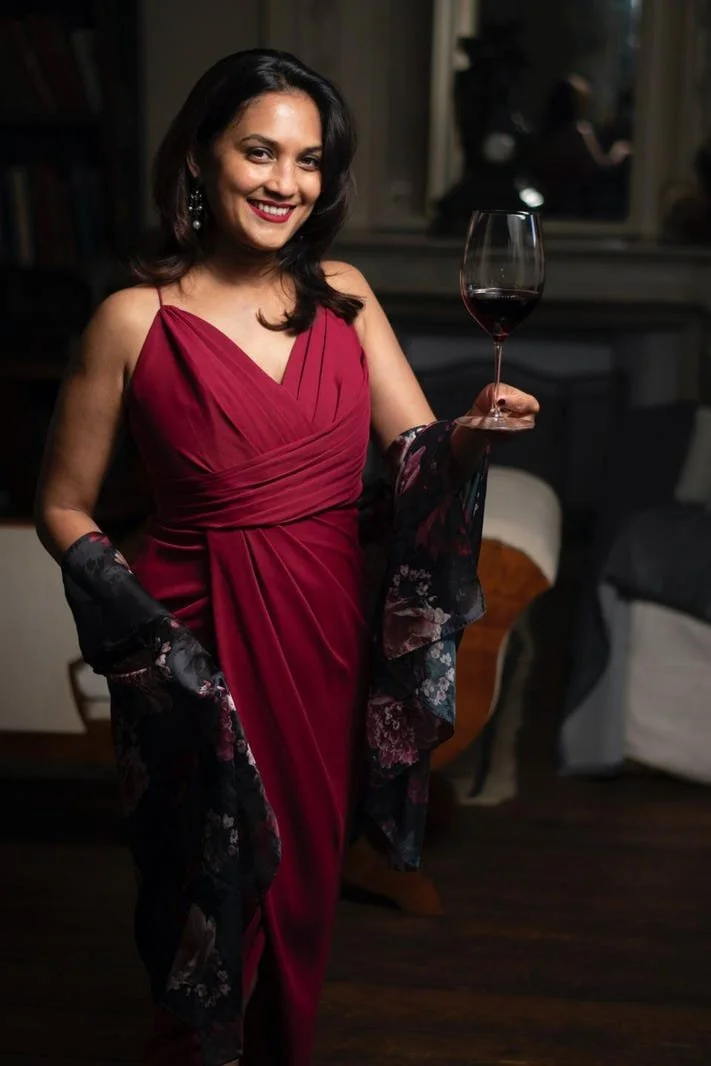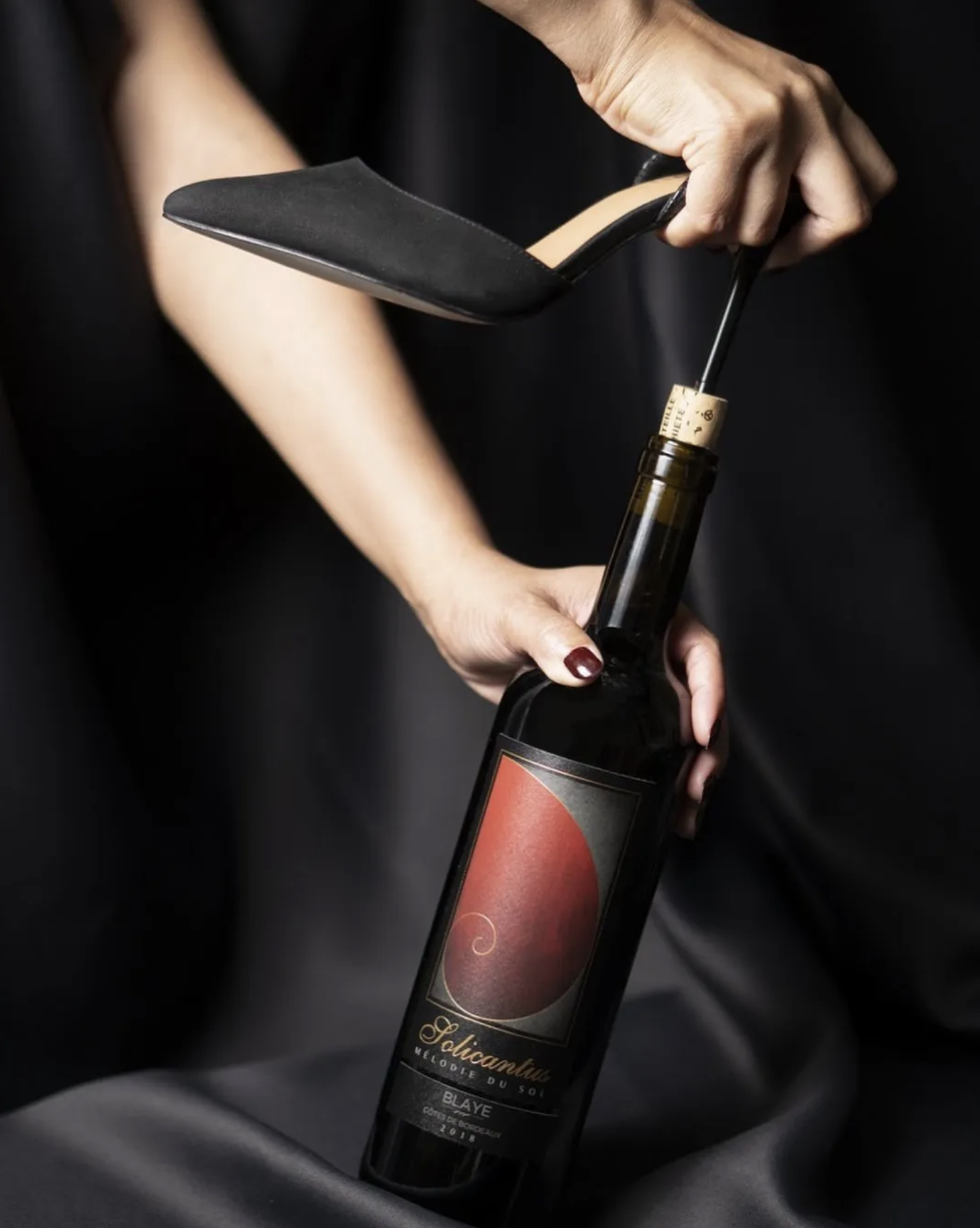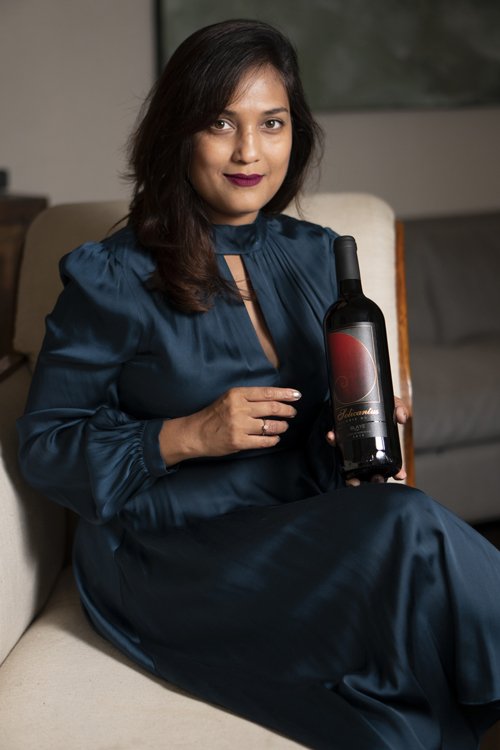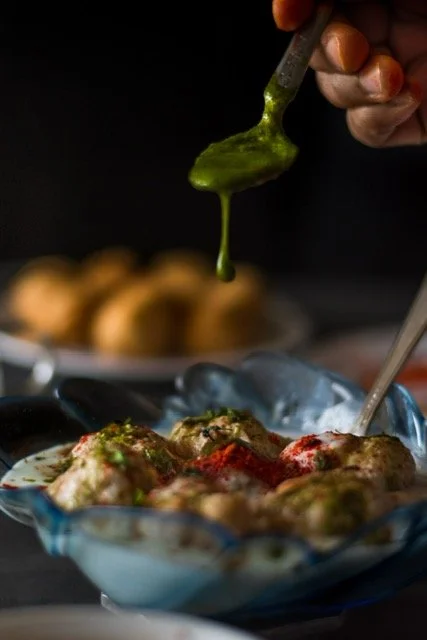▻ Being an Outsider in Bordeaux
Jane Anson in conversation with Namratha Prashanth
Episode Summary:-
What is it like to start a new business in Bordeaux, a place steeped in tradition? Hard enough if you are French, but if you are Indian and a woman? Jane Anson talks to Namratha Prashanth, who left Bangalore after an abusive marriage to create a new life, a new business and a new brand in Bordeaux. She talks frankly about the challenges she faced, including leaving her daughter behind in India with her mother, and how she overcame them to launch her brand, Solicantus.
Namratha left Bangalore to escape an abusive marriage in 2017, and decided to go to Bordeaux to complete a Masters degree in wine management and marketing at INSECC university in Bordeaux. She tells Jane how she did not grow up drinking wine, and was introduced to it by her teacher while taking a degree in hospitality management in Bangalore. She was interested in flavours, as her mother cooked many different cuisines, but what drew her to Bordeaux was her interest in French culture, and in which wine, obviously, played a central part. She took French classes at the Alliance Française and admits, “I picked Bordeaux because as an Indian I hadn’t heard of Burgundy, I hadn’t heard of the Rhône, but Bordeaux had the crown, of being the king of wines, so for an Indian we had Bordeaux before everything else.”
After completing her Masters degree, she applied for many jobs, but the opportunities were quite bleak--she was not offered one interview (it didn’t help that the paperwork involved in employing foreigners is onerous for French companies). She decided to set up her own company. In 2018, Namratha met Corinne Chevrier, who suggested she came and work with her in Blaye, at Château Bel-Air La Royère. A six-month internship at Château Siran had inspired Namratha to make wine, and also given her a sense of peace. She decided to launch her company, Wine Equation, and her new wine brand, Solicantus, a red from Blaye, which is a blend of Merlot, Cabernet Sauvignon and Malbec, and a white from Entre-Deux-Mers, a blend of Semillon, Sauvignon Blanc, Sauvignon Gris and Muscadelle. Solicantus is taken from Latin, Namratha explains, Soli means soil, and Cantus is melody. The label was inspired by the paintings of Salvador Dali, and was painted by Namratha herself.
““As a woman, I was not taken seriously until I launched my label.” ”
One of the many challenges she faced was being determined to be a woman taken seriously, and that only happened when she launched the brand. “They thought I would never succeed,” she notes wryly. Her advice to anyone starting out is, “I would advise people starting a business that a business is about people, about relationships, you need to create a foundation for your business, you need to think long term not short term.”
Her ambitions for the brand were impacted by the pandemic and her need to get her daughter to Bordeaux after her husband agreeing her daughter could come over. An article in Forbes by an American writer who lived in Blaye brought attention to Solicantus, which was followed by an article by Jane in Decanter magazine. Namratha tells Jane how both helped put the brand on the map. Further support has been shown by the Indian Ambassador to France, who invited Namratha to present the wine to 28 European ambassadors. “It was a proud moment,” she declares, and thrilled that Solicantus is seen as enhancing Indian-French relationships.
Today the wine is stocked in France and Belgium, and will be soon be heading to the UK: A fascinating story of a woman who escaped her past to create an exciting future in the wine world against serious odds.
Running Order:-
-
0.00 – 21.00
“In Latin Soli means soil and Cantus melody.”
– Introduction by Jane Anson to Namratha Prashanth’s story.
– Namratha describes Solicantus, a red blend from Blaye, and a white blend from Entre-Deux-Mers.
– Growing up in India and wine not being part of her culture.
– Taking French classes at Alliance Française and falling in love with French culture.
– Matching Solicantus with Indian food.
– Arriving in Bordeaux and the challenges of setting up a new business.
– Studying in Bordeaux for a Masters degree in wine management and marketing. -
21.00 – 38.52
“The French countryside was the perfect healing place for me.”
– Namratha’s determination to stay in France.
– Applying for over 100 jobs and not being offered one interview.
– Meeting Corinne Chevrier of Château Bel-Air La Royère in Blaye.
– The internship at Château Siran and Edouard Moueix’s help.
– The impact of the pandemic on the new business.
– Press articles help the new brand.
– Solicantus being presented to 28 European ambassadors by India’s ambassador to France.
Recipe:-
Dahi Balla:
Soft Dahi dumplings dunked in yoghurt and topped with chutneys. These deep-fried lentil fritters are a popular street snack in India.
Ingredients:
1/2 cup urad dal dhuli 100g, split & dehusked black gram lentil
1/2 cup moong dal dhuli 100g, split & dehusked mung beans
1/2 teaspoon salt
1/2 teaspoon cumin seeds
Water to grind the dal, approx 1/3 cup water
Oil to fry the vadas
To serve:
5-6 cups plain yoghurt or you can use more to taste
Cilantro chutney to drizzle on top
Sweet tamarind chutney to drizzle on top
Cumin powder to sprinkle
Red chilli powder to sprinkle
Salt to sprinkle
Sev optional, to sprinkle
Instructions:
1. Rinse the dals with water and soak overnight in 3 to 4 cups of water.
2. In the morning, drain the water and transfer the drained dal to a blender along with 1/3 cup water (approx), salt and cumin seeds. Grind the mixture to a smooth paste.
3. Then transfer the batter to a stand mixer fitted with whisk attachment. You can also use a hand mixer here or use your hands and mix with a whisk/spoon.
4. Beat at medium speed for 5 minutes (using the whisk attachment) until the batter doubles in size and becomes fluffy. It will also become lighter in colour. If mixing by hand, whisk for around 10 minutes.
4. To check if the batter is ready for frying, drop some of it in a jar of water, it should float which means it's airy and ready to fry.
5. Heat oil in a kadai on medium heat. Oil should neither be too hot, nor too cold. If it's too hot- bhalla will become brown quickly but will be raw from inside.
6. Once the oil is heated, use an ice cream scoop or use your hands to drop batter into the hot oil. Do not overcrowd the kadai, give enough space for the bhallas to fry.
7. Fry the bhalla on medium heat, stir often. Fry until they turn golden brown, this will take around 8-9 minutes on medium heat. Remove fried bhalla on paper towel. Repeat until all batter is finished.
8. Let the bhallas cool. Once cooled, add fried bhalla to warm water for 20 minutes. Bhalla will swell up and increase in size.
9. After 20 minutes, take each bhalla and squeeze gently between your palms to drain water, repeat with all the bhallas.
10. Meanwhile whisk 2 to 3 cups plain yoghurt. Add little water or milk to thin it down. Add bhalla to a bowl and then cover with the whisked yoghurt. Let it sit in the refrigerator for at least 2 hours.
11. Whisk the remaining 3 cups of yoghurt and add some salt and sugar to it (to taste). The yoghurt should be thick but pouring consistency.
12. Take out the bhalla from the refrigerator, place each in a serving tray. Then pour the whisked yoghurt all over. In total, I used around 5 to 6 cups of yoghurt here.
13. Sprinkle cumin powder, red chilli powder and salt on top. Top the dahi bhalla with cilantro chutney, sweet chutney, sev and serve! You may also garnish with pomegranate arils.
RELATED POSTS
Keep up with our adventures in wine
Further Information:-
Stockists:-
Bordeaux
Julo
Blaye:
La Petite Cave – (Caviste & Wine Bar)
Lyon:
Deb's Bistro – (Restaurant)
Paris:
Casa Pelletier – (Wine Bar)
8eme Art – (Restaurant)
Kube Hotel – (Hotel)
Corsica:
A Funtanella – (Restaurant)
La Verticale – (Cavist)
Le Gabriel – (Caviste & Wine Bar)
A Flatta – (Hotel)
Belgium:
Verivino – (Caviste)









Find out why the Connoisseur Week is Sarah Kemp and Jane Anson’s favourite week of the year.